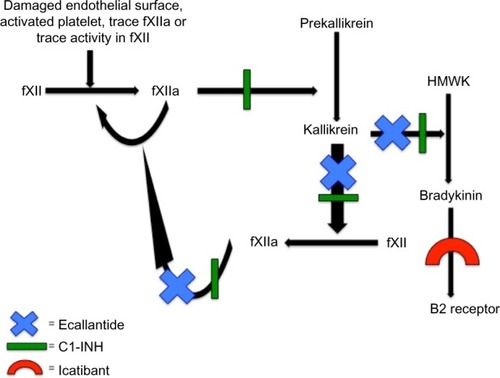Figures & data
Table 1 Diagnosis of types 1, 2, 3, and idiopathic HAE
Figure 1 The pathophysiology of bradykinin formation via the contact pathway.
Abbreviations: ACE, angiotensin-converting enzyme; C1-INH, C1-inhibitor; fXII, factor XII; HMWK, high-molecular-weight kininogen.

Figure 2 Mechanisms of action of the drugs used for treatment of acute HAE attacks.

Table 2 Adverse reactions occurring at ≥3% than placebo in two placebo-controlled clinical trials in patients with HAE treated with ecallantide
